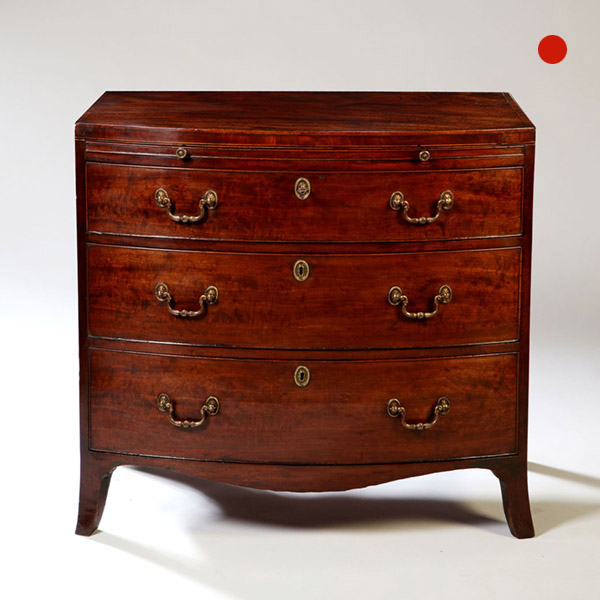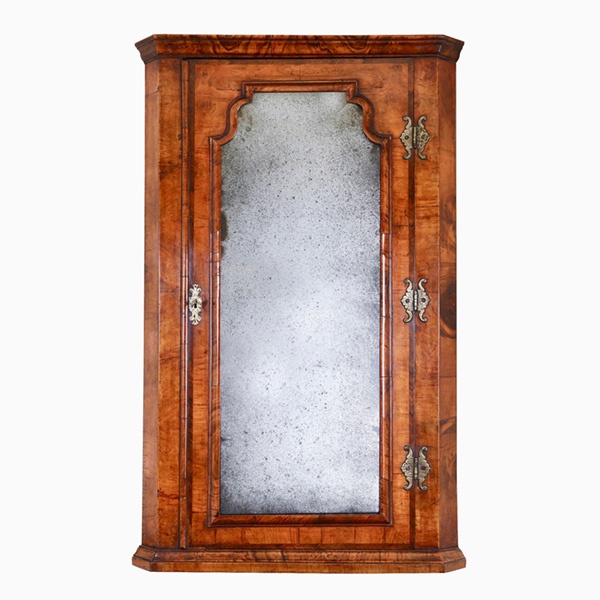An extremely rare George I walnut chest of small proportions on ball and bracket
SOLD
Request Information
Follow Us
An extremely rare George I walnut chest of small proportions on ball and bracket
The cross-grain moulded and feather banded book-matched top sits above two short and three long feather-banded drawers, each book-matched, lined in oak and framed to the carcass with a double-D cross-grain moulding, raised on what is known as the ball and bracket foot.
The chest comes from a small group of pieces to bear the ball and bracket foot and perhaps most famously, by Coxed and Woster, st. Pauls Churchyard, London and Peter Miller ‘in the Savoy’, St Mary-Le-Savoy, London.
The ball and bracket foot was only in production from circa 1720-1735, a transition from the bun foot to the bracket foot. It is most desirable and sought after by collectors.
Condition
Good
Dimensions
Height: 28.35 in. (72 cm)
Width: 25.2 in. (64 cm)
Depth: 17.33 in. (44 cm)
Literature
Early Georgian Furniture by Dr Adam Bowett, page 72-73, plate 2:40.
Dictionary Of English Furniture Makers 1660-1840, Furniture History Society, page 609, ref: Peter Miller.
PREVIOUSLY SOLD

George III Sheraton period bow-fronted caddy topped mahogany chest of drawers
A fine George III Sheraton period bow-fronted mahogany chest of drawers with brushing slide. The chest has the perfect time aged colour to its original wax finished surface and has truly commendable proportions. I love everything about this outstanding and original piece.

George III Sheraton period bow-fronted caddy topped mahogany chest of drawers
A fine George III Sheraton period bow-fronted mahogany chest of drawers with brushing slide. The chest has the perfect time aged colour to its original wax finished surface and has truly commendable proportions. I love everything about this outstanding and original piece.
YOU MAY ALSO LIKE

Queen Anne Walnut Corner Cupboard with Bevelled Mirror Plate
A truly remarkable find in original condition. To the door a shaped soft bevelled mirror plate is framed by a cross-grain molding of typical queen Anne design which is further cross-banded, feather-banded and edged to the opening with a single de-molding.

Queen Anne Walnut Corner Cupboard with Bevelled Mirror Plate
A truly remarkable find in original condition. To the door a shaped soft bevelled mirror plate is framed by a cross-grain molding of typical queen Anne design which is further cross-banded, feather-banded and edged to the opening with a single de-molding.

















